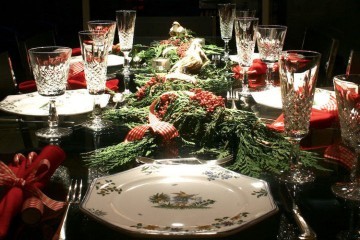If you’ve ever been to a bar, or seen one on tv for the younger readers, than you’ve seen the different types of glassware used for the inebriating concoctions passed along to patrons by bartenders. I, like many, have taken this for granted especially given my own habits in drinking. I only saw the steins and flutes in passing and it was only when I began home brewing that I had to take careful consideration on the glasses I kept in home.
While shopping I asked myself why and found the answer to be an interesting one. Now a days many know that you put a certain drink in certain glasses. The champagne into the flute so that it doesn’t go flat and its bubbles can be displayed, the wine into a teardrop glass goblet so that you do not warm it as you hold it and allow it to properly aerate, the brandy into the snifter so that it can be gently warmed by the hand and the narrow opening allows the aroma to gather and tease the senses with each drink. But what if I told you that our choice in glassware is just as much about the experience as it is the functionality of each glass.
To prove this point I did an experiment. I had three gatherings so that my latest brew could be shared and tasted. Being a brandy and wine woman I own a few glass goblets and snifters, allowing for this experiment. The control group at the first tasting enjoyed a raspberry mead in a tradition glass, the second took theirs in a snifster, and the third was a mixed group. As with each gathering I like to ask my guests to rate their drinks so that I can improve on my brews and the numbers were interesting to say the least.
On a scale of one to ten each guest gets to rate the taste, color, presentation, and feel of the mead. (The feel is to know solely if it is too thick or thin on the tongue since I do experiment quite a bit.) The first group was pretty level in rating with each category falling between six and eight. The second was very much the same with numbers falling between 5-7. The main complaint was that it was too sweet and I can only speculate that they are used to something a bit more burn being sipped from that glass. The third group, however, was interesting with numbers scattered across the board. Presentation, in particular, plummeted falling into the 2-3 range for some while others held steady at a 6-7.
The guests with the snifters seemed to have suffered in this, seeing as it was their cards with the lowest overall ratings.
My conclusion in all of this is that while the numbers did drop a small amount in comparison from group one to group two the glass played a very small part in their enjoyment of their drink until thrust into more social atmosphere that allowed them to see the other glassware and compare what they were holding in their hand to their neighbors, at which point an “improper glass” just felt wrong and ruined the experience.
My conclusion is that the functionality of the glass plays only a small part. But while you can easily place wine in a chalice, whiskey in a tumbler, or a beer in a collins at home the glasses we use in public have more of an impact on how we feel about the drink rather than how it makes us feel.
My sample size was very small, abut 15-20 people per group, and will have to be revisited at some point when I have a batch or two to spare but try it for yourself if you can and see if my findings hold true in a non controlled setting. And remember, drink responsibly.
















